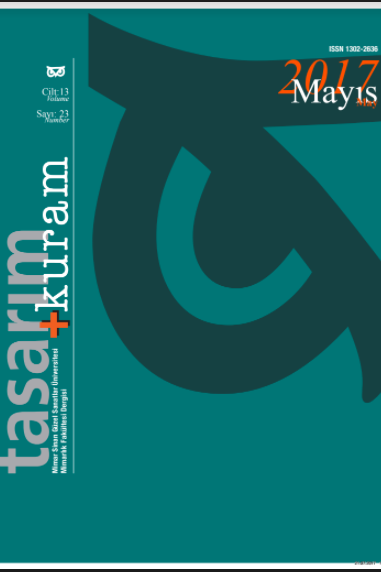Top Döküm Binaları (Tophane-i Amire) ve Onarımları
Bizans döneminde "Metopan" olarak adlandırılan, Osmanlılar döneminde ise Tophane adını alan semtte top döküm tesisleri inşasının Fatih Sultan Mehmed tarafından başlatıldığı bilinmektedir.ll. Bayezıd döneminde genişletilen top döküm tesisleri, Kanuni döneminde yıktırılmış ve yeniden, ancak bu kez daha büyük olarak inşa edilmiştir. III. Selim döneminde başlatılan yenileme hareketleri orduda da yansımasını bulmuş ve bu dönemde Tophane semtinde top döküm tesislerine ilave olarak Nizam-ı Cedid askerlerine ait Topçu ve Top Arabacıları Kışlaları inşa edilmiştir. Bu yapılar topluluğundan günümüze sadece iki adet top döküm binası kalmıştır. Günümüzde mevcut iki top döküm binasından büyük olanı XVIII. Yüzyıl’ın ortalarına, küçük top döküm binası ise XV. Yüzyıl’a tarihlenebilir. Yapılardaki koruma amaçlı onarım çalışmaları, 1958-1959 yılları arasında birinci dönem ve 1973-1984 yılları arasında ise ikinci dönem olmak üzere incelenebilir. "Top Döküm Binaları" 1992 yılında Mimar Sinan Üniversitesi’ne devredilmiştir.
Anahtar Kelimeler:
Top döküm tesisleri, Tophane, Tophane-i Amire, Restorasyon
Imperial Gun Foundaries of İstanbul and Their Restoration
Guns had proved to be very effective in the conquest of Constantinople by the Ottoman Turks in 1453 AD. This is the reason why Sultan Mehmed the Second, also named briefly “Fatih” (The Conqueror) had built these gun foundries directly after the conquest of the city, out of the Genoese city walls in front of the Galata Gate. The first foundry had to be extended at the end of the XV. Century during the reign of Sultan Bayezıd the Second. Only 20 years after this extension, in the time of Sultan Süleyman the First, known as “Süleyman the Magnificient”, the foundries could not meet the requirements of the Empire any longer. Only two foundry buildings remained from the whole complex to our days. The large building with a row of five domes and two aisles covered with barrel-vaults is dated back to the XVIII. Century. The domesrest on arches and pendentives supported by eight columns. The smaller building having a square plan had been built by the “Conqueror”, in the middle of the XV. Century. It has a single dome as a roof, again with a lantern at its apex. The restoration of the existing buildings took place in 1958-1959 and in the years from 1973 to 1984. The buildings were used as “Gun Museum” until they were left to Mimar Sinan University in 1992.The rearrangement of the interior was carried out by the specialists of the University. Since1998 the buildings are in use as “Cultural And Exhibition Center of Mimar Sinan University”.
Keywords:
Foundry, Gun-Foundries, Tophane, Restoration,
- ISSN: 1302-2636
- Başlangıç: 1999
- Yayıncı: Mimar Sinan Güzel Sanatlar Üniversitesi
Sayıdaki Diğer Makaleler
Toplam Kalite Yönetimi anlayışı çerçevesinde Ataşehir Toplu Konut yerleşmesinin değerlendirilmesi
Nesrin DENGİZ, Deniz Onat İNCEDAYI
Understanding The Historic City
Bodrum-Ortakent (Müsgebi)’de Geleneksel Ev Tipleri Üzerine Bir İnceleme
KENT ESTETİĞİNİN, Kentsel Tasarım Yaklaşımında, ANLAM SORUNU VE ESTETİK KURULLARI ÜZERİNE...
